Are Landing Page reports in GA4 still relevant?
Landing page is a session dimension by nature and as such it occupies a less prominent position in the GA4’s event tracking concept. After switching to the event-based model, GA4 has sort of pushed away Landing pages reporting from the main stage. But does this mean landing page analysis is less important? Not at all, quite contrary!
Default Landing Pages report in GA4
Landing page data in GA4 offers you insights into soft metrics as well as both micro and macro conversions. It reveals everything from how many sessions began on a particular landing page to insights into user behavior through engagement metrics, key event rates, revenue-based metrics etc.
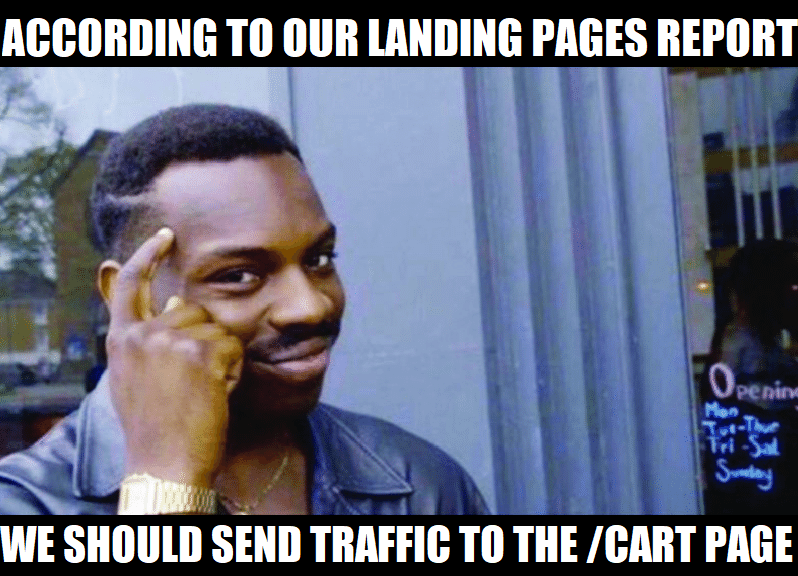
Unfortunately the default landing page report is structured in a one-size-fits-all manner which defies its purpose. Metrics that we see out-of-he-box are sessions, new users, engagement time, key event rates, revenue… To complete the picture of Google’s treatment of LP report - in their very own Merchandise Store GA4 property, a vast majority of sessions have "not set" landing pages :(
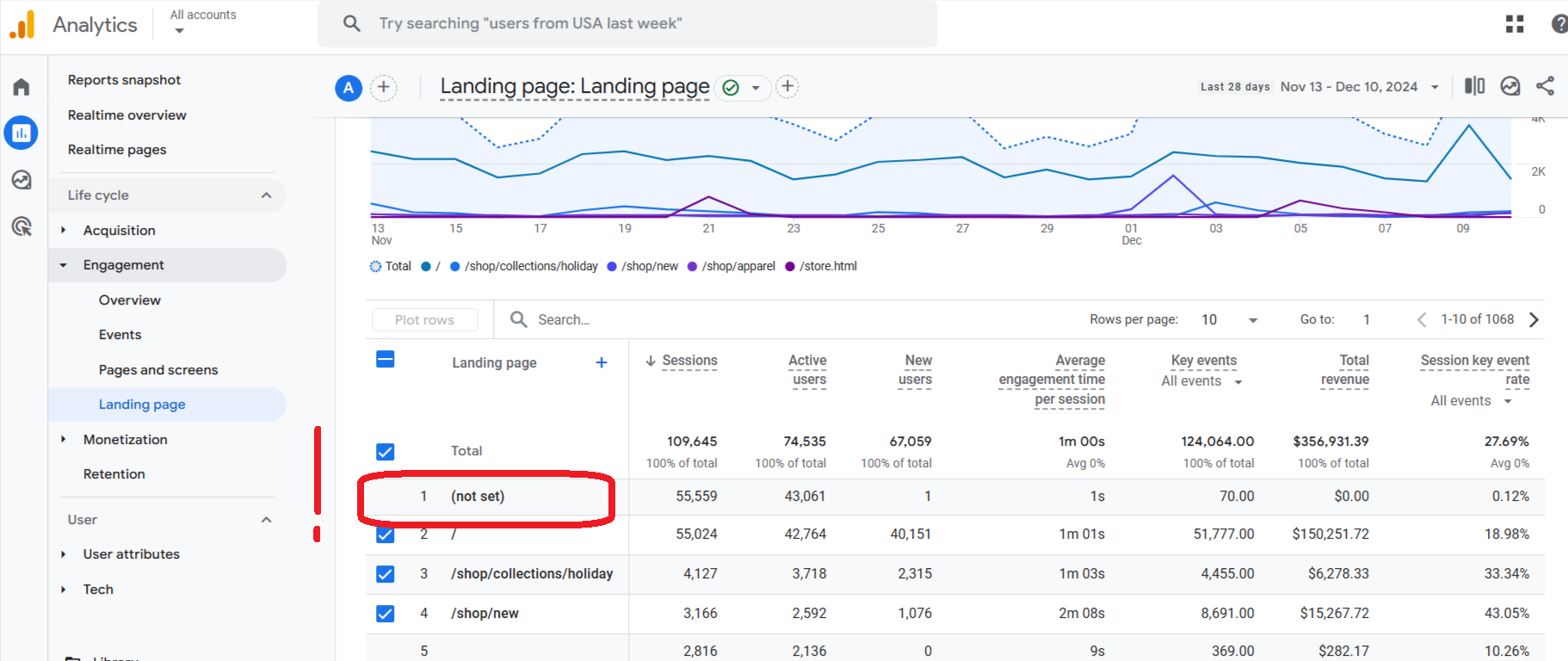
Why should you analyze Landing Pages in GA4 Explorations?
The Exploration section in GA4 is a powerful ally for deeper analysis. Recently, GA4 introduced the Landing page as a standalone dimension, simplifying the analysis process compared to the previous landing page + query string combination. This enhancement eliminates many of the challenges caused by query parameters appended to URLs, such as those from Facebook’s Client ID.
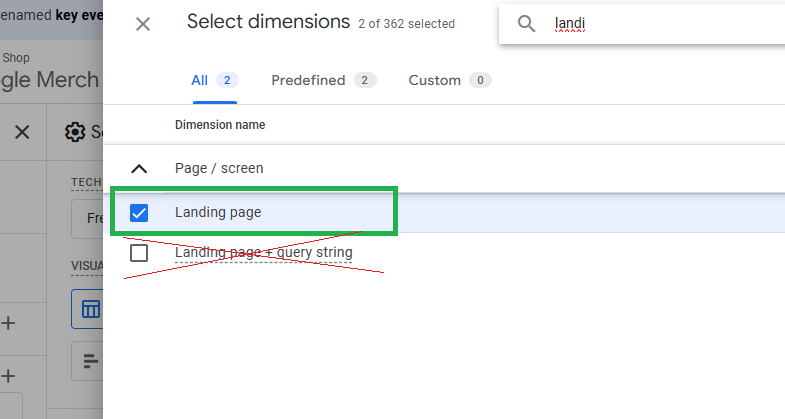
The choice of Landing page metrics heavily depends on the length of the buying cycle:
- If your product or service is purchased “on a whim”, that’s going to make the Landing pages easily comparable based on revenue they bring.
- For businesses with longer buying cycles, landing pages should be measured against soft metrics like engagement rate or average engagement time.
Being a session-based dimension, landing page allows you to analyze the session without going into what’s happening further down on the purchase journey. Each session is tied to a single landing page, and a user will start multiple sessions on various landing pages along their path to purchase, making it essential to evaluate metrics suitable for the proper buying cycle length.
How Do You Compare Landing Pages?
When analyzing landing pages - traffic context matters. A lot. Comparing pages that receive cold traffic (e.g., from social media) to those receiving warm traffic (e.g. email campaigns) can yield misleading conclusions. Instead, focus on creating exclusive exploration tabs for similar traffic sources or campaigns to draw accurate comparisons. In the following example we’re analysing how various PDPs or PLPs engage cold traffic coming from social campaigns only:
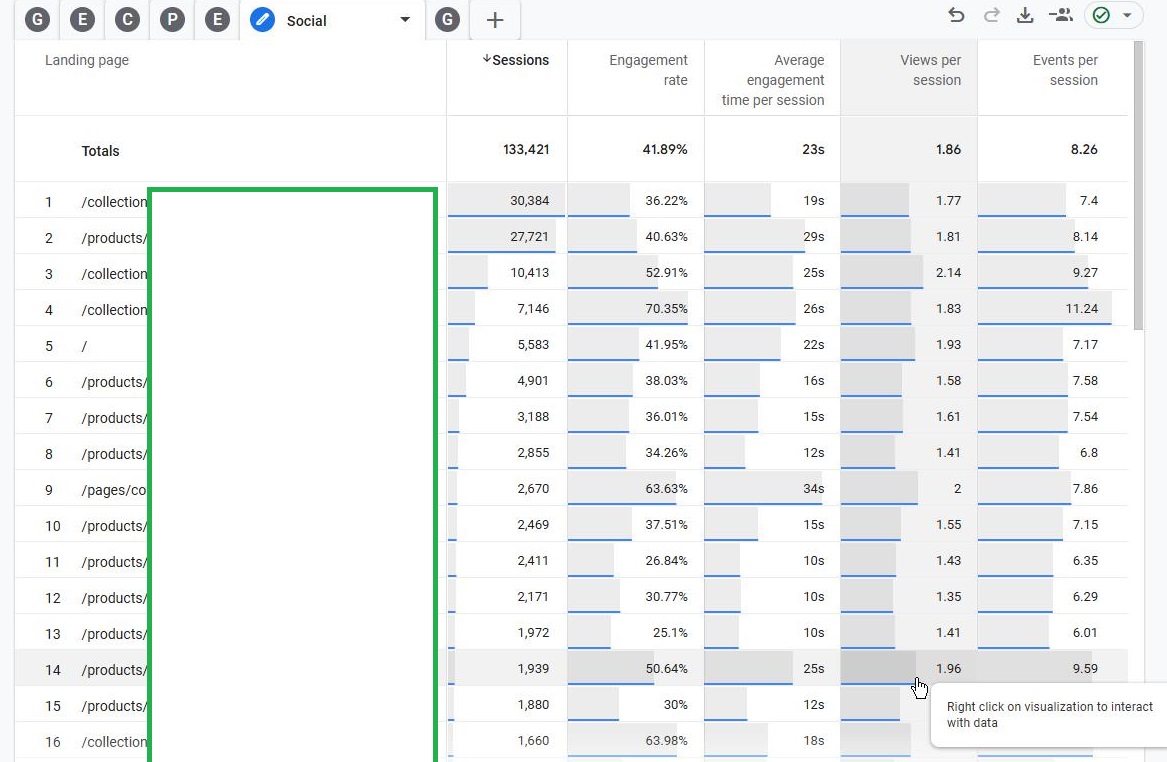
Metrics like views per session or events per session provide additional insights into how effectively landing pages engage users. For cold traffic landing pages, these micro-conversions are often revealing more than macro-conversions like purchases.
When analyzing metrics tied more closely to conversions such as add-to-cart events, total revenue, or ARPU (average revenue per user) - consider traffic sources like CPC campaigns. For instance, landing pages with high ARPU and equitable session distribution from PMAX campaigns often outperform others in terms of revenue generation.
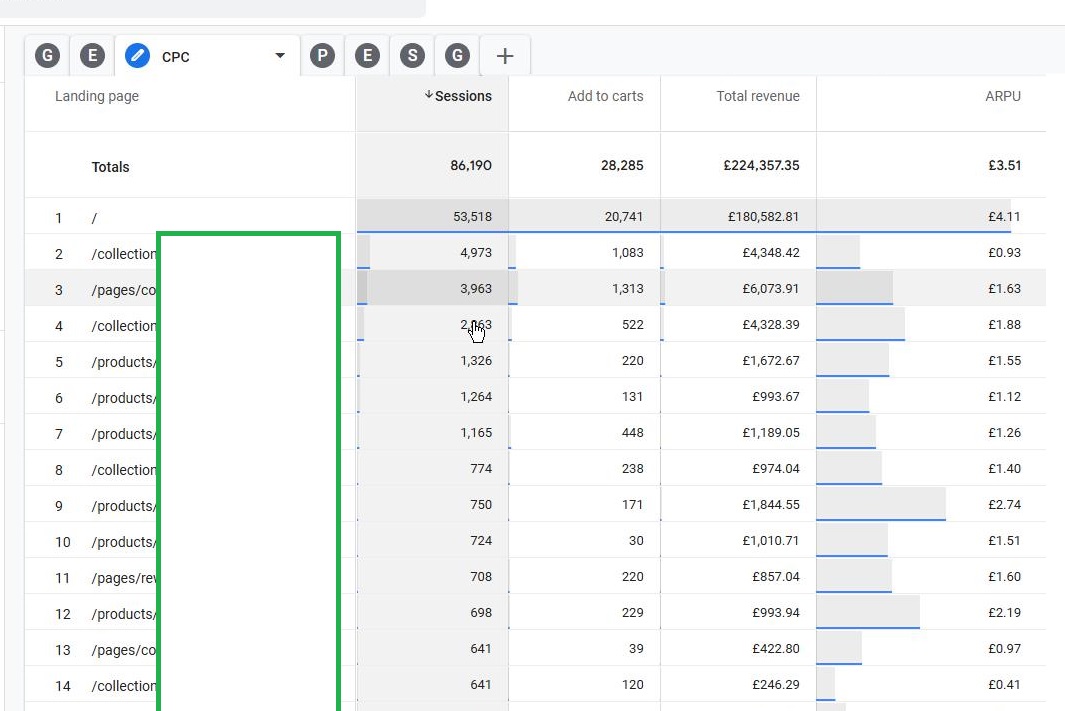
Advanced Landing Page Analysis
Segments in GA4 are the tool for sessionization but also for "userization" (yes, it sounds gross but being an analyst you get the point, right?)

Please note that making a user segment for a session-scoped dimension like Landing page will cause duplicates as a single user can appear in multiple segments.
But first let’s go with session segments - to understand the implications of cold vs warm traffic on Landing pages let’s create these two segments:
How To Segment First-Time Visitors?
Compare landing pages that welcome new visitors to those catering to returning users.
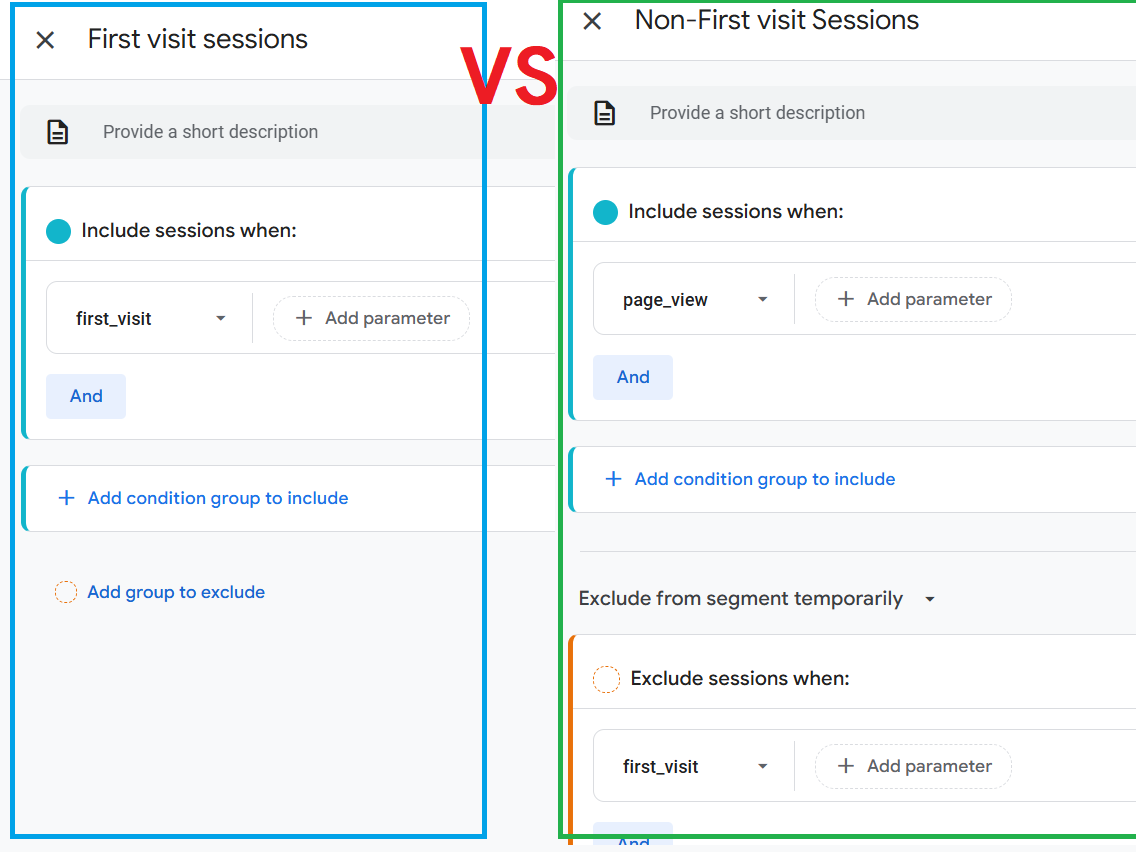
First-visit landing pages often perform differently and require separate consideration:
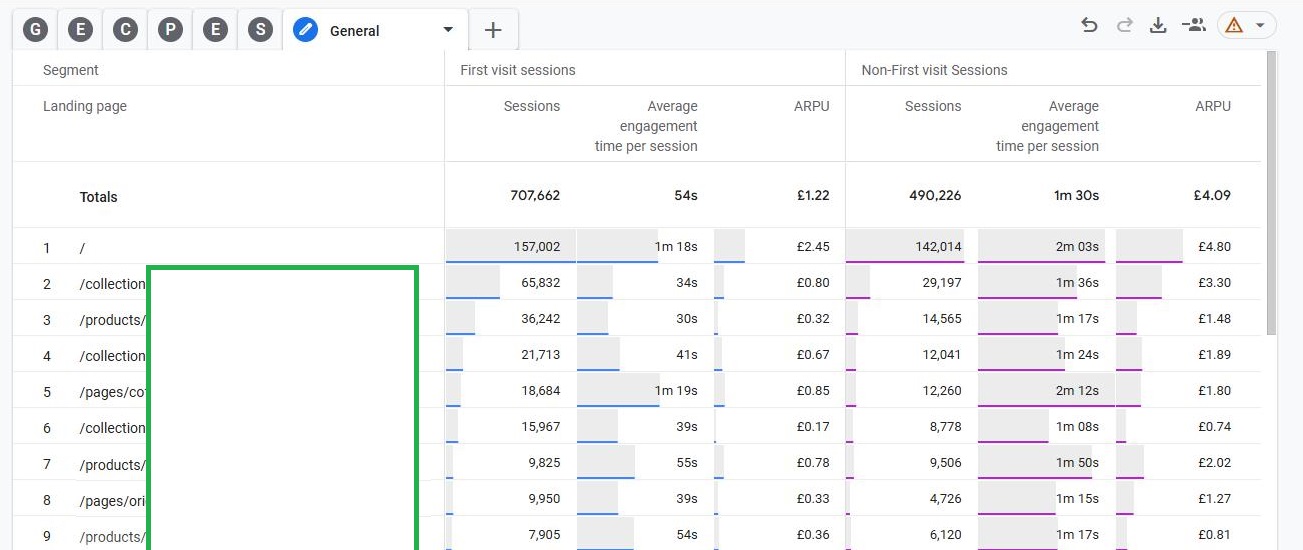
Evaluate High-Value Metrics
Metrics like average purchase revenue (GA4’s version of average order value) can spotlight landing pages driving high-value transactions.
Identifying why certain pages outperform others can reveal optimization opportunities.
The Takeaway
GA4’s event-based model allows for more nuanced analysis of landing pages than ever before. By leveraging which dimensions, metrics, and advanced segments to use/combine, you can uncover actionable insights to improve user engagement and drive conversions. Avoid relying solely on the out-of-the-box landing page report - instead explore the dynamic interplay of micro and macro-conversions across different traffic contexts.
Happy analyzing, and may your landing pages lead the way to higher conversions and revenue!